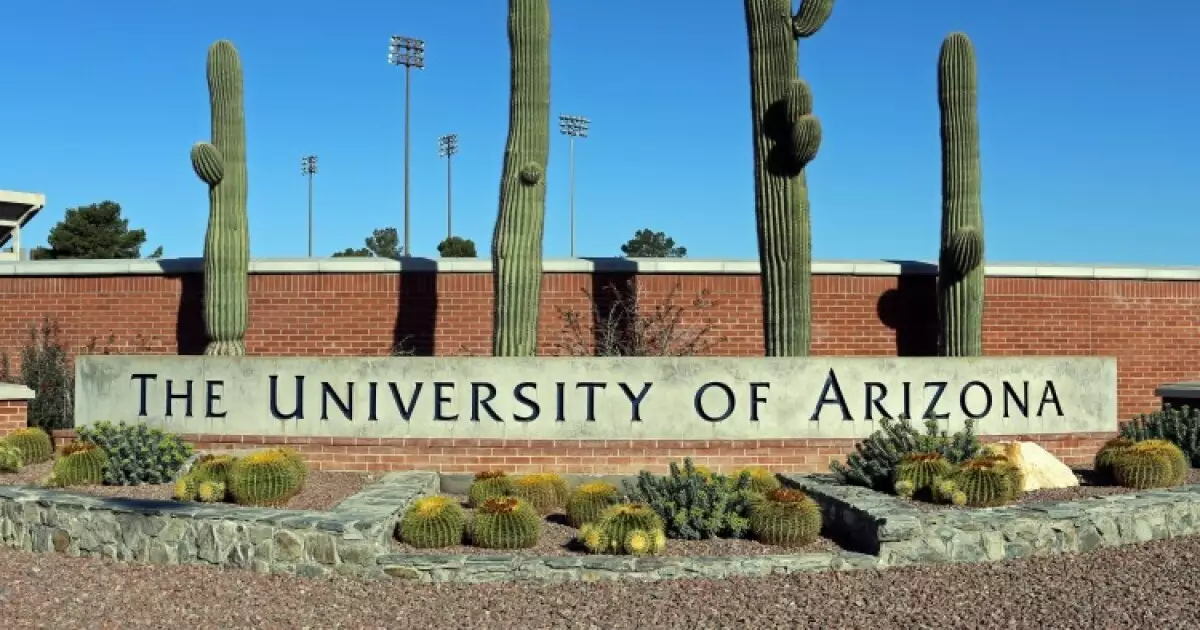The University of Arizona (U of A) finds itself navigating a turbulent financial landscape as it prepares to enter the municipal bond market for the first time since receiving negative rating outlooks from major credit rating agencies. This $115.645 million revenue bond issuance, known as the Stimulus Plan for Economic and Educational Development (SPEED), marks an effort by the Tucson-based university to consolidate and refinance debt dating back to 2013 and 2014. However, this financial maneuver underscores broader issues facing the university, indicating challenges related to governance, operational efficiency, and long-term sustainability.
Earlier this year, both Moody’s and S&P Global Ratings downgraded U of A’s bond ratings outlook from stable to negative. This concern stems primarily from the university’s dwindling cash reserves, which plunged from $844.5 million to $704.5 million in just one fiscal year, resulting in only 110 days of cash on hand—far below the standards set by the Board of Regents. Such financial instability raises alarm bells not only among investors but also within the academic community as it jeopardizes the university’s standing and future financing options.
Former regents’ chair Fred DuVal articulated these concerns, labeling the financial decline as a byproduct of a decentralized financial reporting structure that failed to identify warning signs in a timely manner. The structural inefficiencies highlighted here point to a need for systemic reform within the university’s administrative practices to prevent similar issues in the future.
In light of the deficit—a staggering $177 million projected at the start of fiscal 2024—the university enacted several measures to restore fiscal health. Key strategies included hiring freezes, budget cuts on travel and purchasing, and delaying non-essential capital projects. As a result, university officials managed to reduce the budget deficit to approximately $63 million within six months, demonstrating a capacity for rapid financial recovery when prompted by crisis.
However, an additional projected deficit of $65 million for fiscal 2025 suggests that while immediate measures have yielded some positive results, long-term financial health remains precarious. Central to this ongoing struggle is the university’s reliance on state funding, which accounted for only 17% to 19% of its unrestricted current operating funds from 2019 to 2023. Thus, diversifying funding sources and enhancing revenue from non-resident tuition—along with control of operational costs—will be crucial for future financial stability.
The past year has also witnessed considerable upheaval in the university’s leadership, culminating in the resignation of the chief financial officer and the replacement of the university president. Such changes often herald uncertainty and instability, particularly as Moody’s cites this “prolonged period of governance instability” as a key risk factor. Strong and cohesive leadership is essential for steering the university through its financial challenges and establishing accountability mechanisms while reassuring stakeholders and investors alike.
Furthermore, Governor Katie Hobbs’ insistence on oversight and accountability amplifies the need for a governance overhaul. The challenges posed by the acquisition of the online, for-profit Ashford University—now the University of Arizona Global Campus—show how integrating new entities can further strain an already thin liquidity position, stressing the importance of sound financial management in dealing with external investments.
To address the multifaceted challenges currently faced by U of A, university leadership must prioritize strategic initiatives that not only focus on immediate financial recovery but also foster long-term sustainability. This includes enhancing the university’s fiscal management capabilities, improving transparency in budgeting processes, and expanding outreach for non-resident students to boost revenue.
The forthcoming bond issue’s structuring, particularly its funding mechanism via state lottery contributions paired with university revenues, suggests that there is a thoughtful approach toward balancing costs and leveraging external support. However, this approach’s success hinges on careful execution and proactive management of outstanding debts, which currently total $935 million.
The University of Arizona’s recent financial tribulations illuminate critical vulnerabilities present within higher education institutions today. While immediate fiscal recovery efforts have shown promise, the sustainability of such measures, the implications of leadership instability, and the necessity of improved governance must be prioritized. With a robust commitment to strategic planning and proactive risk management, U of A can position itself not only for recovery but also for a prosperous and stable future in academia. The road ahead remains steep, but with a focus on transparency, financial discipline, and a holistic approach to university governance, the university could restore its standing both in the bond market and in its broader educational mission.

